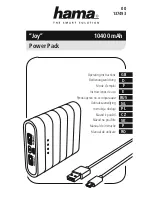
3.2.4
NOTE
Panel controls are· disabled when unit is con
nected in this way.
Signal Programming Voltage Mode
A fixed or variable voltage signal may be fed into ·the voltage mode amplifier
circuit to provide a fixed or variable voltage output. The selected signal source
output should be floating, unless the positive output of the supply is grounded.
The required signal is 0-l0V capable of sourcing 1 mA. Proceed as follows:
1 .
Set POWER switch to OFF.
2.
Remove link from between terminals 3 and 4 of TB3.
3 .
Connect the signal source between terminals 3 and 1 of TB3. Observe
Polarity (positive end to terminal 3). Signal level should not exceed 10
volts.
CAUTION
If programming voltage exceeds 10V, excessive
voltage could occur which can damage the unit.
3.
3
CURRENT MODE OPERATION
In current mode operation, the current output is regulated at the value deter
mined by the setting of the current controls. The output voltage varies as a
function of load. To operate unit in the current mode proceed as follows:
1.
Rotate FINE and COARSE VOLTAGE controls fully counterclockwise,
and adjust COARSE CURRENT control approximately three quarters
clockwise.
2.
Set POWER switch to ON.
3.
Rotate COARSE VOLTAGE control clockwise until unit voltmeter indi-
cates the desired voltage limit.
4.
Set POWER switch to OFF.
5.
Connect load to output terminals. Observe Polarity.
6.
Set POWER switch to ON, and turn CURRENT controls to desired cur
rent regulation setting. POWER and CURRENT MODE lights will illumi
nate, and unit will deliver constant, regulated current to load.
Operation
NOTE
• Any output instability (such as oscillations
due to inductive loading) can be eliminated by
adjusting potentiometer R45 on the unit PCB.
• If voltage increases above the limit set in step
3 preceding, unit will automatically cross over
to voltage mode operation.
3-8
Rev B (6/84)
















































